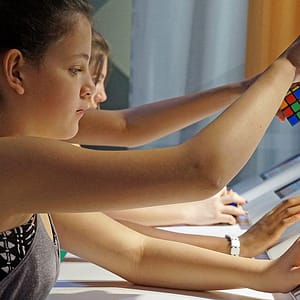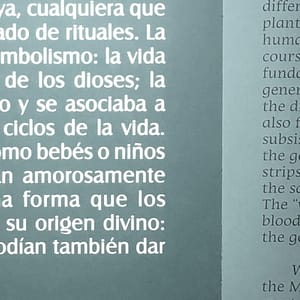How Cultural Initiatives at Museums are Engaging Communities
As you may know, engaging local communities can be a struggle. Demographics are changing faster than ever, making it hard to keep a finger on the pulse of your audience. You may be asking: Who is my community? What are their needs? How is my institution relevant, engaging, and accessible to the people we want to reach?
Museums and cultural institutions everywhere are embracing the opportunities to expand their reach into local communities. In this article, we take a look at changing demographics in the U.S. and the strategies museums are using to meet the needs of diverse local residents.
Diversity Is Becoming the New Majority
Demographic shifts are reshaping America, transforming the country into a more racially and ethnically pluralistic society. Before we reach mid-century, the U.S. will no longer have a single racial or ethnic majority, but will instead comprise a multitude of different groups. Immigration is expected to become the leading driver of population growth, with the country’s foreign-born population predicted to increase by 25 million by 2060—from 44 to 69 million.1
Diversity is no longer confined to major cities, and varies greatly across the U.S. Cities with populations under five million, such as Seattle, Phoenix, and Riverside, California, have some of the highest linguistic diversity among major cities.2 Many of the country’s least-diverse areas are expected to see the greatest degrees of change.
In the face of this transformation, museums are asking “Who is my audience?” and “What are they looking for?”
Engaging Culturally and Linguistically Diverse Communities
As institutions explore new ways of engaging local residents, their mission, vision, and values statements are reflecting this imperative. The Brooklyn Museum states, “We celebrate the cultural vibrancy of our local communities and help build meaningful relationships that elevate and strengthen them.” The Detroit Institute of Arts describes their museum as “the town square of our community, a gathering place for everybody.”
This emboldened focus on local communities has led to forward-thinking programs and initiatives.
- Many museums are launching off-site programs, sending artists into schools, partnering with local galleries, community organizations, and social service agencies.
- They are translating maps, promotional materials, educational guides, and exhibition labels into the languages spoken in their local communities.
- Institutions are offering programs to children on the autism spectrum, veterans, and Alzheimer’s patients and their caregivers.
- They host book signings, performances by local musicians, yoga classes, and farmers’ markets.
- Some museums even support underserved communities with parenting classes for young mothers or programs for youths caught up in the juvenile justice system.
Several museums across the country are on the right track. In this article, we will highlight a few examples of institutions that are getting it right.
How the High Museum of Art Is Leading Local Audience Engagement
The High Museum of Art, one of the leading art museums in the southeastern United States, saw recent success increasing the engagement of local audiences. The museum is located in Atlanta, the second largest majority Black metro area in the country. Approximately 54% of the city’s 4.5 million citizens are Black or African American. Over a two-year period, 2016-2017, the museum made headlines for tripling its nonwhite audience from 15% to 45%.3
Here are a few of the steps the museum took:
- The High Museum was well known for a three-year partnership with the Louvre, launched in 2006, that resulted in a series of high-profile exhibitions. In recent years, the museum shifted focus and increased the number of in-house shows. This change allowed curators to tailor selections to local audiences and increase the diversity of the work on display. In 2017, five of the museum’s 15 shows highlighted work by artists of color.
- The museum’s permanent collection includes a substantial amount of work by notable artists of color. Curators decreased the overall number of exhibits to focus instead on showcasing selections from the permanent collection, which also effectively increased the diversity of the work being displayed.
- The museum shifted its marketing strategy to offer visitors more than one way to engage with the museum. Rather than allocating a large percentage of its marketing budget to blockbuster shows, 60% of the budget was reallocated to promoting a greater cross-section of exhibits, a strategy that would encourage visitors to keep coming back. The remaining 40% of marketing resources were dedicated to pitching museum programs to families and younger professional audiences.
- The marketing team developed a new motto with a friendlier appeal, “Here for you,” which they translated into the city’s four most commonly spoken languages.
- To further increase accessibility, the museum shifted to programs with touchable resources for visitors with visual impairments and sensory processing disorders, along with Second Sundays art-making workshops, tours, and performances for families.
Get in Touch!
Reach out to discuss your next translation project with a member of our team.
Attracting First-Time Visitors Through Locally Relevant Exhibitions
The Dallas Museum of Art set attendance records in 2017 with its blockbuster show of Mexican art, México 1900–1950: Diego Rivera, Frida Kahlo, José Clemente Orozco, and the Avant-Garde, that resonated with the city’s local communities. The museum aggressively promoted the exhibition to Dallas’s sizable Latino population with their “Yo Soy DMA” outreach program, a community effort to drive attendance and local engagement. According to the museum, they received more than 802,000 visitors in 2017, the highest attendance in a decade.4 This included a large percentage of local, first-time visitors.
Celebrating Diversity by Translating Interactive Exhibits
The California Academy of Sciences has a strong commitment to diversity, which is eloquently stated in its core values: “Diverse communities are stronger and more resilient, both in nature and in human society. We are committed to cultivating a culturally inclusive and equitable environment in which diversity of thought and expression are valued, respected, and celebrated.”
The museum is located in San Francisco, where 45% of residents speak a language other than English at home. Cal Academy used language to make their two recent interactive exhibits, Giants of Land and Sea and Dino Days, accessible to visitors from local neighborhoods. The museum had the exhibits’ wall labels, print graphics, video scripts, and multimedia elements translated into the languages most commonly spoken by city residents following English: Spanish, Traditional Chinese, and Filipino.
Featured Services
Learn more about…
Showcasing Community Artists in Response to Local Events
In 2018, the Minneapolis Institute of Art launched Art and Healing: In the Moment, a powerful exhibit for many among the local African American community. The museum showcased work made by community artists in response to the fatal shooting of a local resident, Philando Castile, who was killed by a police officer during a traffic stop eight miles from the museum.
At a high level, this moving exhibition examined a topic all visitors could relate to: the ability of art to help people cope with trauma and loss. However, the primary audience for the exhibit was the local African American community. By tackling an issue that mattered to neighboring communities and not shying away from difficult subject matter, the museum created a show that was meaningful at multiple levels and presented opportunities for dialogue.
Using Ethnic Food to Create Cross-Cultural Dialogue
The Children’s Museum of Discovery of San Jose is located in Silicon Valley, where Asians and Pacific Islanders form the largest racial block. For years, the area has drawn immigrants at a faster rate than the rest of the country, with more than 37% of Silicon Valley residents born outside the United States, compared to 27% across California and 14% nationally.
To welcome new local immigrant families, the museum utilized FoodShed, their innovative café dedicated to supporting healthy communities with ethically sourced food. In 2017, the museum launched a two-year initiative that was intended to promote cross-cultural understanding by providing dinners and community workshops. Over the course of the three dinners, the museum hosted 500+ people from ethnically diverse local communities, offering a rotating menu of dishes, from traditional Latin American, Vietnamese, Chinese, Indian, to Filipino. The successful program created a forum that engaged local immigrants and encouraged cross-cultural dialogue.
The Role of Cultural Institutions as Social Catalysts
Diversity is on the rise. This presents new challenges as well as opportunities for those museums willing to rethink and revitalize their approach. The examples above illustrate just a few of the exciting ways museums have become relevant and inclusive to the people they want to reach.
Developing and remaining accessible to local communities is an ongoing, ever-changing conversation. Museums must continue to examine the role they play within their local communities – be it educator, storyteller, attraction, gathering space, or catalyst for change.
 Named to the 2024 Inc. 5000 list of fastest-growing companies and ranked among the world’s top 100 language service providers by CSA Research
Named to the 2024 Inc. 5000 list of fastest-growing companies and ranked among the world’s top 100 language service providers by CSA Research
